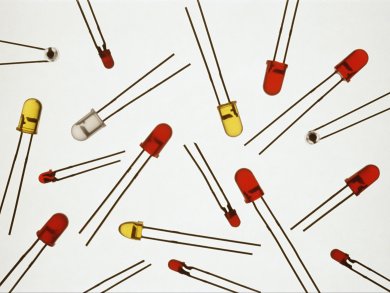Computer monitors and televisions produce their pictures by using red, blue and green light. Powerful and inexpensive red and blue light-emitting diodes (LEDs) already exist, but creating a green LED with sufficient output is proving challenging.
Christian Wetzel and co-workers, Rensselaer Polytechnic Institute, New York, USA, have etched a nanoscale pattern at the interface between the base of the LED and the layer of gallium nitride that gives the LED its green color. They did this by growing GaInN/GaN quantum well LED wafers on the c-plane sapphire base by metal-organic vapor phase epitaxy. The etching technique produced LEDs which showed triple the light output over un-etched LEDs.
The new technique also enhances light extraction, internal efficiency, and represents a simple and cheap way toward green LEDs that are as powerful as their red or blue counterparts.
- Defect-reduced green GaInN/GaN light-emitting diode on nanopatterned sapphire
Y. Li, S. You, M. Zhu, L. Zhao, W. Hou , T. Detchprohm, Y. Taniguchi, N. Tamura, S. Tanaka, C. Wetzel,
Appl. Phys. Lett. 2011, 98, 151102.
DOI: 10.1063/1.3579255




